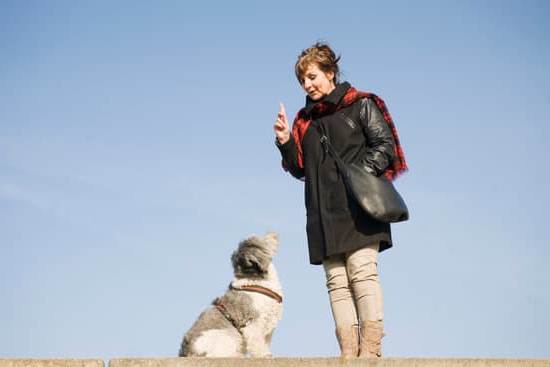Are you wondering, “can dogs sit on train seats?” This is a common question that many pet owners have when it comes to traveling with their furry companions. In this article, we will explore the various factors that come into play when considering whether dogs are allowed to sit on train seats.
When it comes to traveling with dogs, one of the key considerations is understanding the official policies of train companies regarding the presence of dogs on seats. Train policies vary from company to company, and it’s important for dog owners to be aware of these regulations before embarking on their journey.
In addition to train policies, there are also health and safety concerns to take into account when considering whether dogs can sit on train seats. Potential issues such as allergies, cleanliness, and the comfort and safety of other passengers all play a role in this consideration. We will delve into these factors and discuss how they impact the decision of whether or not dogs should be allowed on train seats.
Train Policies
When it comes to traveling with dogs on trains, one of the first considerations is the official policies of train companies regarding dogs and their presence on seats. Each train company may have its own rules and regulations when it comes to allowing dogs on board and whether they are permitted to sit on seats. Here are some common policies from various train companies:
- Amtrak: Amtrak allows small pets to travel on many of their trains for a fee, but they must remain in a carrier at all times. The only exception is service animals.
- London Underground: Dogs are generally allowed on the London Underground, as long as they are well-behaved and kept on a leash. They are not allowed to occupy a seat that may be needed by other passengers.
- Japan Railways: In Japan, some trains have specific cars where passengers can travel with their pets, while other trains do not allow pets at all. If allowed, some pets may be required to be in carriers or placed on the floor rather than seats.
Understanding the specific policies of the train company you plan to travel with is crucial when deciding whether your dog can sit on train seats. It’s important to familiarize yourself with these rules beforehand so that you can make appropriate arrangements for your furry companion’s comfort and safety during the journey.
In addition to knowing the official policies of train companies, it’s also essential to consider the health and safety concerns associated with allowing dogs to sit on train seats. Allergies, cleanliness, and potential disturbances to other passengers are just some of the factors that should be taken into account when deciding whether your dog can sit on a seat during a train ride.
By being aware of both official regulations and potential issues, dog owners can ensure that their pet’s presence does not disrupt or inconvenience fellow travelers.
Health and Safety Concerns
When it comes to allowing dogs to sit on train seats, several health and safety concerns must be taken into consideration. First and foremost, many passengers may have allergies to pet dander, and allowing dogs to sit on seats can exacerbate these allergies. This can lead to discomfort and potential health issues for affected passengers. Additionally, the cleanliness of train seats can be compromised when dogs are allowed to occupy them, potentially exposing passengers to unsanitary conditions.
In addition to these concerns, allowing dogs to sit on train seats can also lead to potential disturbances for other passengers. Dogs may be unpredictable in their behavior, and having them on seats could lead to unwanted interactions or disturbances with other travelers. Furthermore, some dogs may not be as well-behaved in a public setting, which could cause stress or anxiety for fellow passengers.
Given these considerations, it is important for dog owners to understand and respect the health and safety concerns associated with allowing dogs on train seats. It is important that both dog owners and other passengers feel comfortable and safe during their journey.
| Concerns | Implications |
|---|---|
| Potential Allergies | Discomfort and health issues for affected passengers |
| Cleanliness | Potentially unsanitary conditions for train seats |
| Potential Disturbances | Unwanted interactions or disturbances with other travelers |
Etiquette
When traveling with a dog on a train, it’s important to observe proper etiquette to ensure a comfortable and respectful experience for all passengers. One common question that arises is whether dogs can sit on train seats, and the answer largely depends on the policies of the specific train company.
While some may allow dogs to occupy seats under certain conditions, most train companies have rules in place that require dogs to remain on the floor or be properly secured in a pet carrier.
In most cases, allowing dogs to sit on train seats is discouraged due to health and safety concerns. Allergies are a potential issue, as well as cleanliness and hygiene, especially if the dog has been in outdoor environments prior to boarding the train.
Additionally, having a dog on a seat can cause disturbances to other passengers who may not be comfortable or at ease around animals. Therefore, it’s important for dog owners to be considerate of these factors when traveling with their pets.
To maintain proper etiquette when traveling with a dog on a train, it’s best to keep the dog off the seats and respect the space of other passengers. This means ensuring that your dog remains either on the floor next to you or within an appropriate pet carrier for the duration of the journey.
Keeping your dog close and under control will not only show consideration for other passengers but also contribute to a smooth and pleasant travel experience for everyone involved.
| Train Company | Dog Seating Policy |
|---|---|
| Amtrak | Dogs must remain on floor or in carrier |
| National Rail (UK) | Dogs must remain off seats unless otherwise specified by personnel |
| Eurostar | Pets must remain secured in carriers at all times |
Alternatives
When it comes to traveling on trains with dogs, it’s important to consider alternative options for seating arrangements in order to ensure a comfortable and safe journey for both the dog and other passengers. Many train companies have designated pet areas or specific guidelines for passengers traveling with pets, which can provide a suitable alternative to allowing dogs to sit on train seats.
Designated Pet Areas
Some train companies offer designated pet areas within their carriages where passengers can sit with their dogs without disturbing other travelers. These pet areas typically have specific seats or sections of the carriage that are reserved for passengers with pets, providing a dedicated space for dogs and their owners while ensuring the comfort of other passengers who may have allergies or reservations about sharing space with animals.
Use of Pet Carriers
Another alternative option for seating arrangements for dogs on trains is the use of pet carriers. In situations where designated pet areas are not available, or if a passenger prefers a more contained and secure environment for their dog, using a pet carrier can be an effective solution.
Pet carriers can help keep dogs calm and comfortable during the journey while also preventing any potential disturbances to other passengers. Additionally, using a pet carrier can help address health and safety concerns related to allowing dogs on train seats, as it provides a controlled environment for the animal.
By considering these alternative options for seating arrangements, dog owners can ensure a positive experience when traveling on trains with their pets while also being mindful of the needs and concerns of other passengers. Whether utilizing designated pet areas or opting for the use of pet carriers, these alternatives
Legal Considerations
When it comes to bringing dogs on trains, there are various legal considerations that both dog owners and other passengers should be aware of. Different train companies may have their own specific rules and regulations regarding the presence of dogs on their trains.
In some cases, these policies may vary depending on the type of train service or the length of the journey. It is important for dog owners to familiarize themselves with these policies before embarking on a train journey with their furry companions.
Train Company Policies
Before bringing a dog on a train, it is essential to check the specific policies of the train company in question. Some companies may allow dogs to travel for free, while others may require a small fee or have restrictions on certain types of trains. Understanding these policies can help dog owners ensure that they are in compliance with the rules and avoid any potential issues during their journey.
Rights and Responsibilities
While dog owners have the right to bring their pets on certain trains, it is important to recognize that other passengers also have rights, particularly when it comes to their comfort and safety. Dog owners should be mindful of how their pets can affect other travelers and take steps to minimize any potential disturbances. This includes keeping dogs off seats, ensuring they are well-behaved, and being prepared to make accommodations if necessary.
Legal Implications
In some cases, there may be legal implications associated with bringing a dog on a train. For example, if a dog causes damage or injury while onboard, both the owner and the train company could potentially be held liable. Understanding the legal responsibilities involved in traveling with a pet can help dog owners make informed decisions and take appropriate precautions to prevent any issues during their journey.
By being aware of these legal considerations and taking proactive measures to ensure that their dogs are well-behaved and respectful of other passengers’ space, dog owners can help create a positive experience for everyone involved when traveling by train.
Tips for Train Travel With Dogs
Traveling on trains with dogs can be a rewarding experience, but it requires careful planning and consideration for the comfort and safety of both your pet and your fellow passengers. Here are some practical tips and advice to help ensure a smooth journey for everyone involved:
- Preparation: Before embarking on a train journey with your dog, make sure they are adequately prepared for the experience. This includes ensuring that they are comfortable with traveling in a confined space and introducing them to the sights and sounds of a train station.
- Observe Train Policies: Familiarize yourself with the specific policies of the train company you will be traveling with regarding pets. Some companies may require dogs to be kept in carriers or designated pet areas, while others may have restrictions on the size and breed of dogs allowed on board.
- Comfort Items: Bring along familiar items such as their favorite blanket or toy to help keep your dog calm and comforted during the journey. Additionally, consider investing in a comfortable travel carrier or harness to keep them secure during transit.
Real-Life Experiences
It can also be helpful to seek advice from other dog owners who have traveled on trains with their pets. Real-life experiences can provide valuable insights into potential challenges and successes when it comes to navigating train travel with a dog.
Overall, by taking proactive steps to prepare your dog for the journey, being mindful of train policies, and respecting the comfort of other passengers, you can help ensure that both you and your canine companion have a pleasant and hassle-free train travel experience.
Real-Life Experiences
In conclusion, the question of whether dogs can sit on train seats is a complex issue that involves consideration of official train policies, health and safety concerns, etiquette, legal considerations, and practical tips for traveling with dogs. While some train companies may allow dogs on seats under certain conditions, it is important to be mindful of potential health risks, cleanliness issues, and the comfort of other passengers.
Proper etiquette when traveling with a dog on a train also involves keeping the dog off seats and respecting the space of fellow travelers.
To address these challenges, alternative options for seating arrangements for dogs on trains can include designated pet areas or the use of pet carriers. This not only serves as a solution to potential health and safety concerns but also ensures a more comfortable experience for both the dog and other passengers. Additionally, understanding the legalities of bringing a dog on a train and being aware of rights as both dog owners and other passengers is crucial in navigating this issue.
Real-life experiences shared by individuals who have traveled with their dogs on trains can provide valuable insight into the pros and cons of allowing dogs on seats. These personal anecdotes can offer a well-rounded perspective on the topic, shedding light on instances where having a dog on a seat has been smooth and uneventful as well as scenarios where it has posed challenges or disruptions to other passengers.
Ultimately, finding a balance between accommodating canine companions while respecting the needs and comfort of all passengers is key in addressing this issue.
Frequently Asked Questions
Can I Buy a Seat for My Dog on Amtrak?
Unfortunately, Amtrak does not allow passengers to buy seats specifically for their dogs. Instead, small pets are allowed in carriers that fit under the seat, while larger dogs may be placed in a specially designated car.
Can Dogs Sit on Your Lap on the Train?
Generally, Amtrak allows small dogs and cats to sit on passengers’ laps during train travel as long as they remain in an approved carrier. Larger pets, however, must remain on the floor or in a carrier for the duration of the journey.
Can My 60 Pound Dog Travel Amtrak?
Yes, Amtrak permits dogs weighing up to 20 pounds (including the carrier) to travel with their owners. Larger dogs up to 60 pounds may also travel on certain routes that offer pet accommodations in a specially designated pet car for an additional fee.

Welcome to the blog! I am a professional dog trainer and have been working with dogs for many years. In this blog, I will be discussing various topics related to dog training, including tips, tricks, and advice. I hope you find this information helpful and informative. Thanks for reading!





